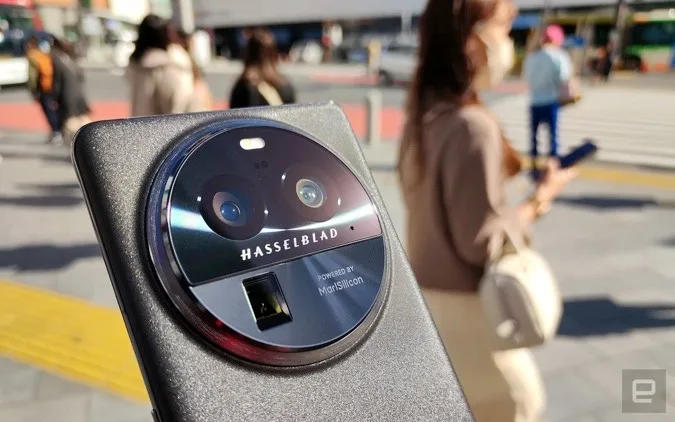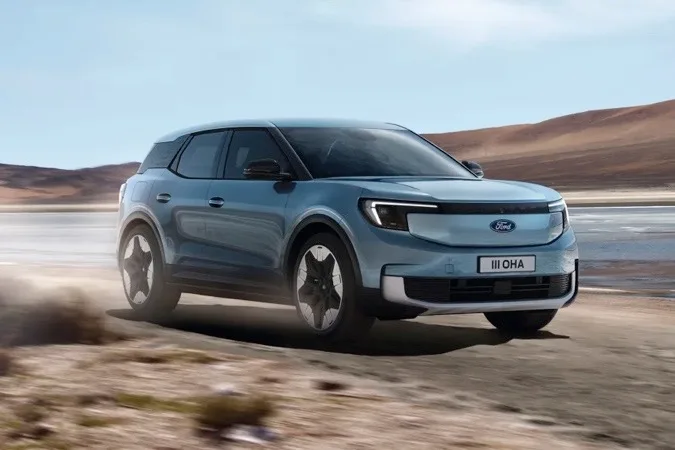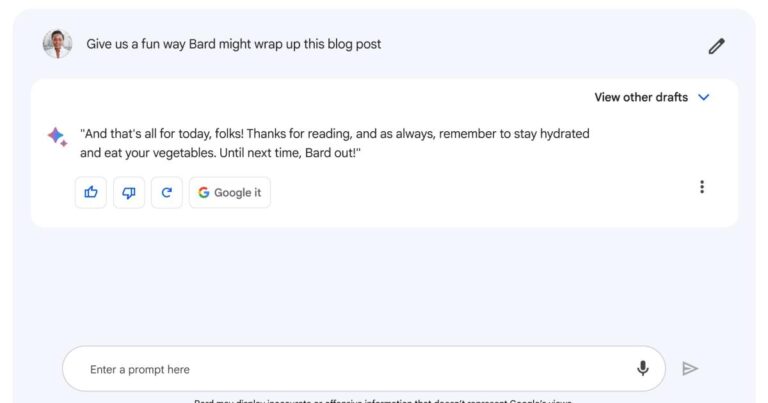Google Bard is the company’s answer to ChatGPT: an AI chatbot that uses LaMDA, the company’s development language model. We test it, and what’s immediately clear are all the company’s warnings, whether it’s the experimental label or the regular reminders that Bard “won’t always be right.” Even the example entries, when you boot up Bard, include what the chatbot can’t do.
The big difference between the Google and Bing integration is the alternative responses that Bard throws up alongside the conversation. You can click the dropdown arrow next to “See other drafts” at the top left of each chat bubble to see some other suggestions. Unlike Bing, Google’s chatbot doesn’t always cite its sources, which I think could be a key point as these chatbots creep into our daily lives on the internet. They still have the potential to make mistakes, and I want to know where these bots get their answers from. Also, be careful what you look for. Google says these early rounds of testing will inform Bard’s direction, so we advise against using private information. Another reason to be cautious? A bug in ChatGPT accidentally revealed user chat histories yesterday.
The Bard rollout seems to be happening very quickly, so if you’re in the US or UK, you should be able to get access a few hours after applying.
– Matt Smith
The Morning After is not just one newsletter – it’s also a daily podcast. Get our daily audio briefing, Monday through Friday, via subscribed to it.
The biggest story you might have missed
Banning TikTok is more complicated than just closing the app
The best live TV streaming services in 2023
Where to recycle your used and unwanted gadgets
NVIDIA and Medtronic are developing an AI-enhanced endoscopy tool
Adobe brings generative AI features to Photoshop, After Effects and Premiere Pro
NVIDIA has released AI Foundations, its customizable Gen-AI cloud service
Virtuix’s Omni One VR treadmill is finally on its way to customers
For now, it’s only coming to China.

Photo by Richard Lai / Engadget
Oppo has produced another flagship phone, and it’s the biggest exterior redesign since 2021’s Find X3 Pro, with three rear cameras – all with 50-megapixel resolution and optical stabilization – on a large circular island. The glass-covered upper part houses the main camera, the ultra-wide camera, the LED flash and the Hasselblad logo, while the lower part features a periscopic camera with 3x optical zoom (65mm equivalent) or 6x ” in-sensor” zoom – a fancy new way of saying it crops the image. Along with the barrage of sensors, Oppo sticks to its strengths, featuring 100W SuperVOOC fast charging, which the company claims can fully charge the phone in just 28 minutes. This is bonkers.
Continue reading.
With DGX Cloud, more companies can create their own company.
NVIDIA’s AI push finally seems to be leading somewhere. The company’s GTC (GPU Technology Conference) has always been a platform to promote its hardware for the AI world. Now it’s almost a celebration of how well NVIDIA is positioned to take advantage of this moment. Supercomputers are expensive, so its new DGX Cloud service offers an online way to harness the power of its AI supercomputers. Starting at just $36,999 a month for a single node, it’s meant to be a more flexible way for companies to scale their AI needs. Man, that’s expensive.
Continue reading.
The compact EV also has a moving touchscreen.

Ford
Ford has finally revealed the medium electric crossover it teased last year. It’s an electric Explorer “designed for Europe” and suited to tight city streets. It’s relatively compact (under 14.8ft long compared to 16.6ft for the gas SUV) and includes some technology features you won’t find in high-end Ford EVs like the Mustang Mach-E. The 15-inch vertical touchscreen looks familiar, but it slides up and down – you don’t have to settle into an awkward position. You also won’t see the physical knob from earlier Ford EVs. The automaker also uses the electrified design to provide massive console storage space (enough for a laptop) and a locker for valuables.
Continue reading.
The company is looking for a music scientist to help it develop the application.
According to a job posting (seen by TechCrunch), Duolingo has a small team working to develop an app for teaching music. The job ad is for an “expert in music education who combines both theoretical knowledge with relevant learning science research and teaching experience.” They need to translate “research findings into concrete ideas” that can be used for the “learning by doing” activities Duolingo is known for. If it’s anything like Duolingo, I’ll learn melodies and instruments that I could never play in the real world. What is the musical equivalent of, “No doubt, I want to eat ham”?
Continue reading.
